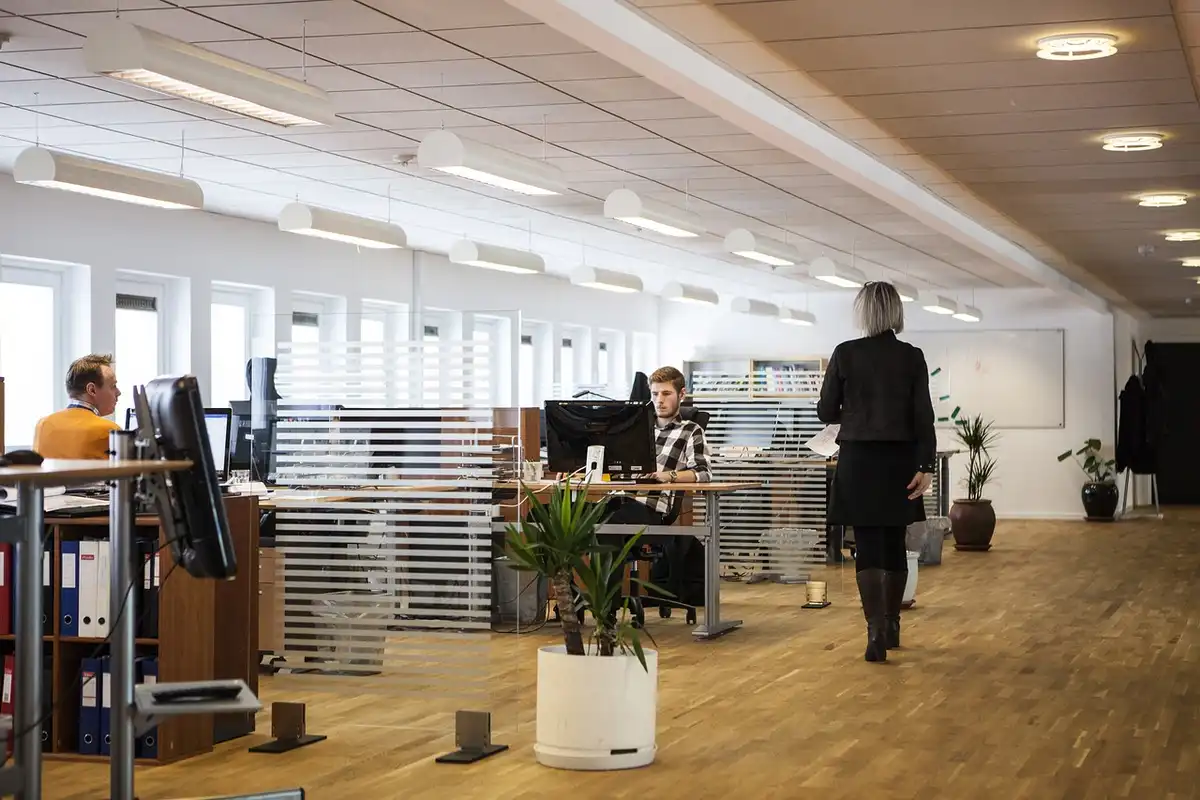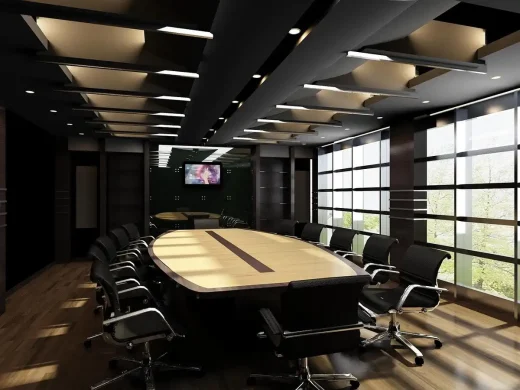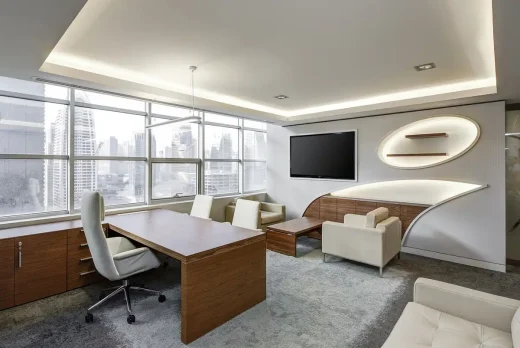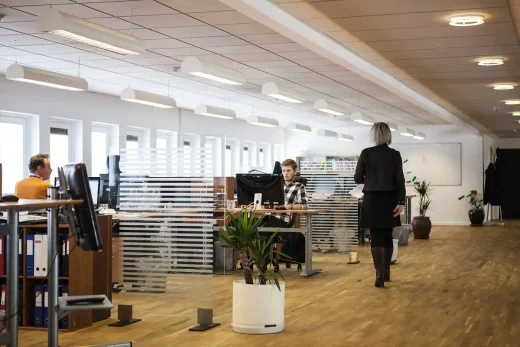Effective ways to organise office space, Commercial property interior systems
Effective Ways to Organise Office Space
November 4, 2024
Well-organised office space can significantly impact productivity, employee morale, and overall efficiency. A clutter-free, structured environment streamlines workflow and fosters creativity and collaboration. There’ve been many takes on how to organise office space effectively, and here is one more from us.
Prioritise Workspace Layout
Start by assessing the layout of the office space.
- Consider Workflow: Position departments or teams that frequently work together closer to one another to simplify communication.
- Natural Light: Whenever possible, place desks near windows. Studies suggest that natural light improves mood and productivity.
- Open vs. Closed Spaces: Balance open areas with private meeting rooms. Open spaces encourage interaction, but designated quiet zones allow for focused work and private discussions.
Declutter and Organize Supplies
An organised environment reduces distractions and boosts efficiency. Keeping only essential items at hand will streamline workflows and make the office look tidier.
- Clean Desk Policy: Employees should keep only necessary supplies on their desks to reduce clutter.
- Storage Solutions: Use filing cabinets, shelves, or storage bins to organise supplies, documents, and office materials.
- Digital Organization: Store documents digitally, reducing the need for paper files and freeing up physical space.
Optimise Shared Spaces
Meeting rooms, break rooms, and kitchens require careful planning to be functional and welcoming.
- Defined Purpose: Meeting rooms should be reserved for discussions, while the break room should have a relaxed ambience for employees to unwind.
- Easy Access to Supplies: Equip meeting rooms with essential items like whiteboards and projectors.
- Communal Seating Arrangements: Use modular seating in common areas to allow for flexibility.
Incorporate Ergonomics
Comfort is crucial in office spaces to ensure employee well-being and maintain productivity.
- Adjustable Desks and Chairs: Invest in ergonomic furniture that can be customised to each employee’s needs.
- Screen Height and Placement: Ensure that computer monitors are at eye level to reduce neck strain.
- Encourage Movement: Arrange spaces to encourage movement, such as placing printers and bins a short walk from desks.
Utilise Technology for Efficiency
Technology can help simplify organisational efforts, making it easier for employees to find resources, collaborate, and manage tasks.
- Digital Project Management Tools: Use Trello, Asana, or Slack to keep track of tasks, deadlines, and projects.
- Shared Calendars: Shared calendars help schedule meeting rooms and manage deadlines more effectively.
- Virtual Storage Solutions: Platforms like Google Drive and Dropbox centralise documents, making them accessible to employees anywhere.
Create Designated Zones
Designating specific zones for different activities ensures employees know where to go for collaborative work, focused tasks, or relaxation.
- Collaboration Zones: Designate areas for brainstorming sessions and collaborative work with tables and whiteboards.
- Quiet Zones: Create quiet areas for deep, focused work.
- Relaxation Zones: Include comfortable seating, plants, and natural lighting in break areas to give employees a place to recharge.
Maximise Storage Solutions
Efficient storage solutions help reduce clutter and free up office space for a cleaner, more organised look.
- Vertical Storage: Vertical shelving and wall-mounted storage are used to make the most of the available space.
- Multi-Functional Furniture: Use furniture that doubles as storage, such as ottomans with compartments or desks with built-in drawers.
- Flexible Storage Options: Mobile storage units can be moved around as needed, making the space more adaptable.
Make Use of Color and Décor
Colours and décor can profoundly impact the office atmosphere and employee morale. Carefully selected colours and decorations enhance comfort and creativity.
- Colour Psychology: Colors like blue and green promote calm and focus, while yellow and orange can boost creativity. Use colours that align with the office’s objectives.
- Add Plants: Indoor plants improve air quality and add a touch of nature, which can boost employees’ moods and reduce stress.
- Artwork and Personal Touches: Incorporating motivational wall art for office spaces can inspire creativity and productivity. This could include quotes, company values, or abstract designs that resonate with your team. Allow employees to add personal items to their workspace.
Maintain Flexibility
An adaptable office is crucial in a rapidly changing work environment.
- Modular Furniture: Use furniture that can be rearranged to adapt to new projects or team changes.
- Rolling Desks and Storage: Mobile furniture and storage units make it easy to shift the layout without disrupting the workflow.
- Scalable Spaces: Consider using flexible spaces, such as coworking spaces or office space for rent, to accommodate fluctuating team sizes or remote work needs.
Implement Regular Maintenance and Organization
A well-organized office requires consistent upkeep. Regular maintenance and tidying will prevent clutter from accumulating.
- Daily Clean-Up Routine: Encourage employees to spend a few minutes tidying their workstations at the end of each day.
- Weekly Deep Clean: Schedule a deeper cleaning and organisation day each week for tasks like wiping down shared surfaces, rearranging supplies, and organising files.
- Feedback System: Allow employees to suggest improvements to the office space organisation, helping you stay aware of any needs or issues.
An organised office space creates a positive, productive environment for everyone. You can transform any office into an efficient, comfortable workspace by thoughtfully arranging furniture, integrating technology, and setting up designated zones.
Comments on this guide to Effective ways to organise office spacei article are welcome.
Previously on e-architect:
Workplaces – Knowledge Work
The Next Generation of Knowledge Work: Lessons Learned on the Path to Hybrid Workplaces
Workplace Amenities Report released amidst Flight to Quality in Commercial Real Estate
Next generation of knowledge work, hybrid workplaces
Recent related architecture articles on e-architect:
The Fluid, Sustainable Future of Retail Article
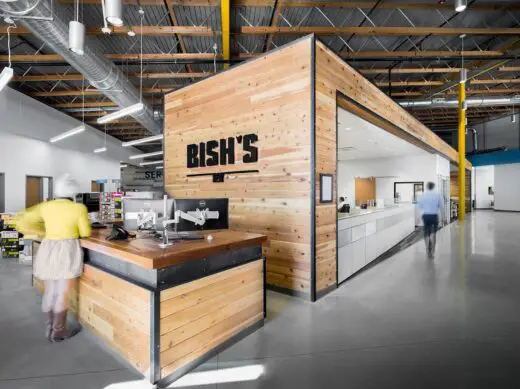
The fluid, sustainable future of retail
Data-Informed Design for User Experience at Work
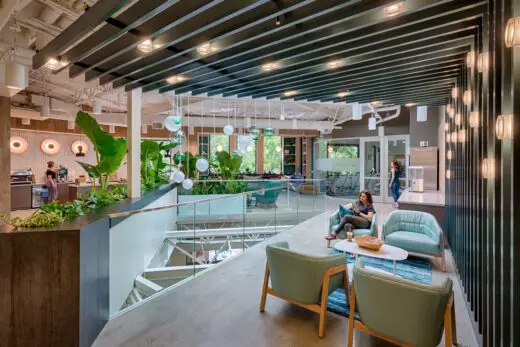
photo : Marco Zecchin
Data-Informed Design for User Experience at Work
Cushing Terrell ATX Office
Architecture: Cushing Terrell
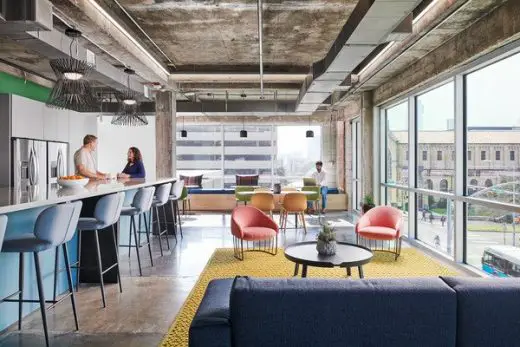
photograph : Peter Molick
Cushing Terrell ATX Office in Austin, Texas
Third places offices break-away
American Architecture Design – chronological list
Comments / photos for the Effective ways to organise office space architectural article page welcome.

